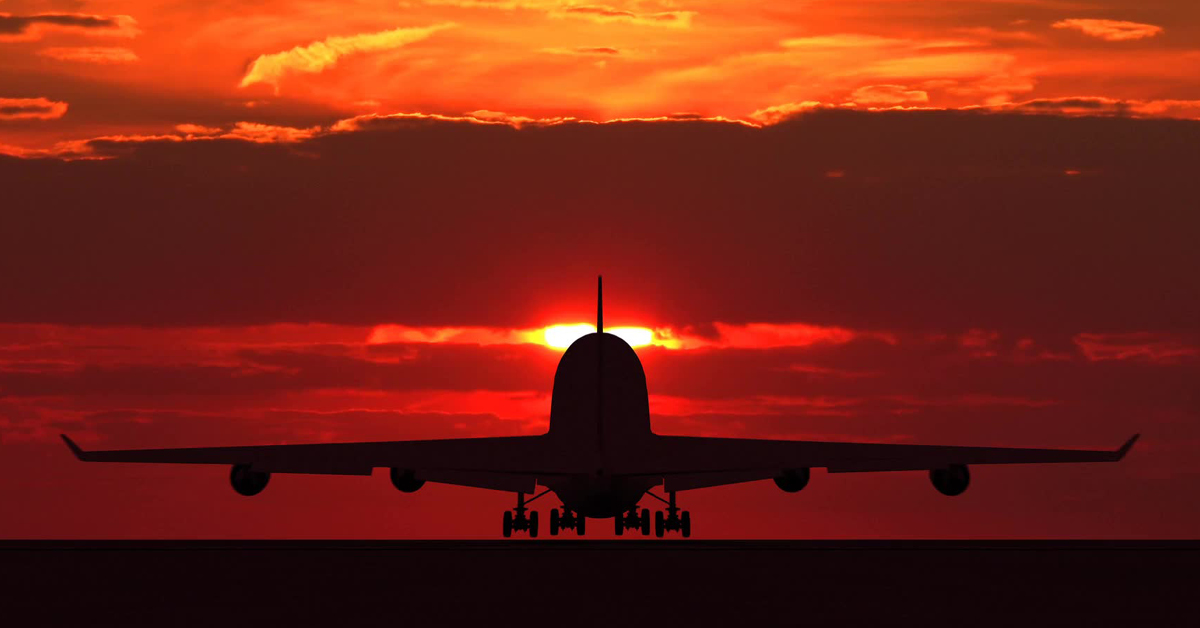Aireon eighteen months post-launch

Now, a year-and-a-half since its system went live, Aireon operates on a constellation of 66 Iridium satellites that receive broadcasts from ADS-B equipped aircraft every 2 -8 seconds, effectively ensuring global, real-time air traffic surveillance.
Since its launch in 2019, Aireon’s space-based ADS-B technology has provided a new method of flight surveillance, one that closes an essential gap in coverage created by traditional ground-based surveillance systems.
Before Aireon, classic radar and ground-based ADS-B left an estimated 70 percent of the global airspace unsurveilled, primarily due to limitations in surveillance caused by extreme conditions and decreased line of sight capabilities in remote regions of the globe, like mountains, oceans and polar regions.
Now, a year-and-a-half since its system went live, Aireon operates on a constellation of 66 Iridium satellites that receive broadcasts from ADS-B equipped aircraft every 2-8 seconds, effectively ensuring real-time 100 percent surveillance of global air traffic.
And Aireon’s presence in the aviation industry continues to grow. New safety certifications from the European Union Aviation Safety Agency (EASA) and expanded commercial data services capabilities are driving an expanding list of ANSP customers around the world. And through one of the most turbulent periods in aviation’s history, Aireon has also taken on a new role in the industry, providing data insights to help aid in the growth of global traffic recovery.
Safety
EASA certification
In June 2019, five months after the completion of the Iridium satellite constellation and the official launch of 100 percent global coverage, the European Union Aviation Safety Agency (EASA) announced Aireon would be the first-ever certified provider of aircraft surveillance-as-a-service. EASA’s certification process ensured the performance of Aireon data for use in critical safety-of-life Air Traffic Services (ATS) surveillance.
Aireon ALERT goes live
On July 9, 2019, in partnership with the Irish Aviation Authority (IAA), Aireon’s Aircraft Location and Emergency Response Tracking (ALERT) went live as the first and only free service of its kind. Aireon ALERT fills a critical need: a free service that ensures search and rescue personnel have accurate and up-to-date aircraft position data in any emergency, without traditional location or geographic limitations, like over oceanic airspace or rugged terrain.
In December of last year, Aireon ALERT was part of a search and rescue operation for a missing aircraft in Miami Oceanic airspace. After Aireon ALERT data pin-pointed the last known position of the aircraft, a search and rescue team was able to narrow their search parameters and find the pilot alive within 55 meters of the position provided by Aireon ALERT.
Customer milestones
DC-ANSP
In November 2019, the Dutch Caribbean Air Navigation Service Provider (DC-ANSP), which controls over 300,000 square kilometers of airspace in Central America, deployed Aireon’s space-based ADS-B surveillance service in the Curaçao Flight Information Region (FIR). This deployment addressed a need for real-time surveillance over an essential throughway that is primarily oceanic airspace where ground-based systems have line of sight limitations.
ASECNA
For the first time in 2020, with Aireon’s space-based ADS-B equipage, ASECNA has 100 percent real-time air traffic surveillance over the entire 16.1 million square kilometers of its oceanic and terrestrial airspace. Following nearly two years of collaboration with Aireon on terrestrial surveillance, ASECNA’s expansion of ATS surveillance data coverage across all six ASECNA FIRs gets it one step closer to its goal of uniting African airspace.
Horizons
COVID-19’s reach into the aviation industry in 2020 has been as monumental as it has unforgiving. Through the turmoil of international travel bans and nation-wide lockdowns, Aireon has continued to allow for new customer launches in 2020.
Despite the circumstances, Aireon has ensured ANSPs and other providers were able to retain their established levels of safety and efficiency in their air traffic control and management systems. Thanks to these increased remote capabilities, Aireon is able to provide the same high-fidelity data to support new solutions in aerospace, as well.
Commercial data services
On October 28, 2020, the announcement of three new commercial data services products marked the first time Aireon’s global dataset is available beyond its traditional ATS surveillance enhancement application from Aireon directly. AireonFLOW™, AireonSTREAM™ and AireonINSIGHTS™ all aim to fill unique needs within and beyond the ATM industry. Read more.
Space-based ADS-B in new airspace
AAI
India has become the third largest aviation market in the world, and with the upcoming launch of space-based ADS-B, the Airports Authority of India (AAI) will have access to real-time air traffic surveillance over some of the busiest oceanic routes in the world. As the first in the region to offer enhanced air traffic surveillance services to its users, AAI demonstrates the potential that space-based ADS-B has to drastically improve safety, efficiency and capacity in growing airspaces without modernized remote surveillance capabilities.
COCESNA
Aireon and COCESNA established a strategic partnership in 2020 to enhance the operations and collaboration of air traffic surveillance in the Central American region. This unique agreement enables the use of Aireon data for airspace and traffic optimization projects, such as the CANSO ATFM Data Exchange Network for the Americas (CADENA) initiative. With a launch expected later this year, this expansion of Aireon’s space-based ADS-B’s capabilities in Central America will ensure that COCESNA remains a regional leader in efficiency and safety.
NiuSky Pacific (NSPL)
Papua New Guinea’s rugged, mountainous terrain and unpredictable inclement weather have meant that efficient and effective installation and maintenance of ground-based radar and ADS-B stations is a constant challenge. By adopting Aireon’s space-based ADS-B technology in 2020, NiuSky Pacific (NSPL) will be able to address its significant geographical challenges head-on, strengthening all operations within the Port Moresby FIR.
Aireon and CANSO
Data-driven partnership
The COVID-19 pandemic has provided an era of uncertainty for the aviation industry unlike any it has confronted in the past. In the face of that growing uncertainty, Aireon and CANSO saw an opportunity to provide insight into the impact of COVID-19 on the industry. Over time, the need for data has evolved, and today, as global traffic continues to rebound, this partnership aims to provide vital insight to enable the industry to safely, efficiently and sustainably handle future traffic growth.
Industry trends through COVID-19
Global trends
Spring of 2020 saw a quick and dramatic decline in air traffic. Global aircraft movements hit their lowest point the week of 12 April 2020 with a total loss of over 535,000 movements compared to the first week of January. Since that lowest point, movements have rebounded over 288,000.
Regional trends
While Aireon’s data shows 54 percent of the loss of movements has been recovered globally, each region’s own decline and recovery since April have been slightly different. While Africa, Asia, the Caribbean, Europe, North America and the North Atlantic all hit their lowest point the same week as global traffic (12/4/20), others were slightly earlier. The Middle East hit its lowest point of traffic the week of 29 March 2020, and both the Pacific and South America on the week of 5 April 2020.
Since then, North America, Asia and the Pacific have all rebounded over a 50 percent since their lowest point of traffic. Africa, the Caribbean, the Middle East, South America and Europe are all over 40 percent, with only the North Atlantic seeing a rebound of less than 40 percent.



